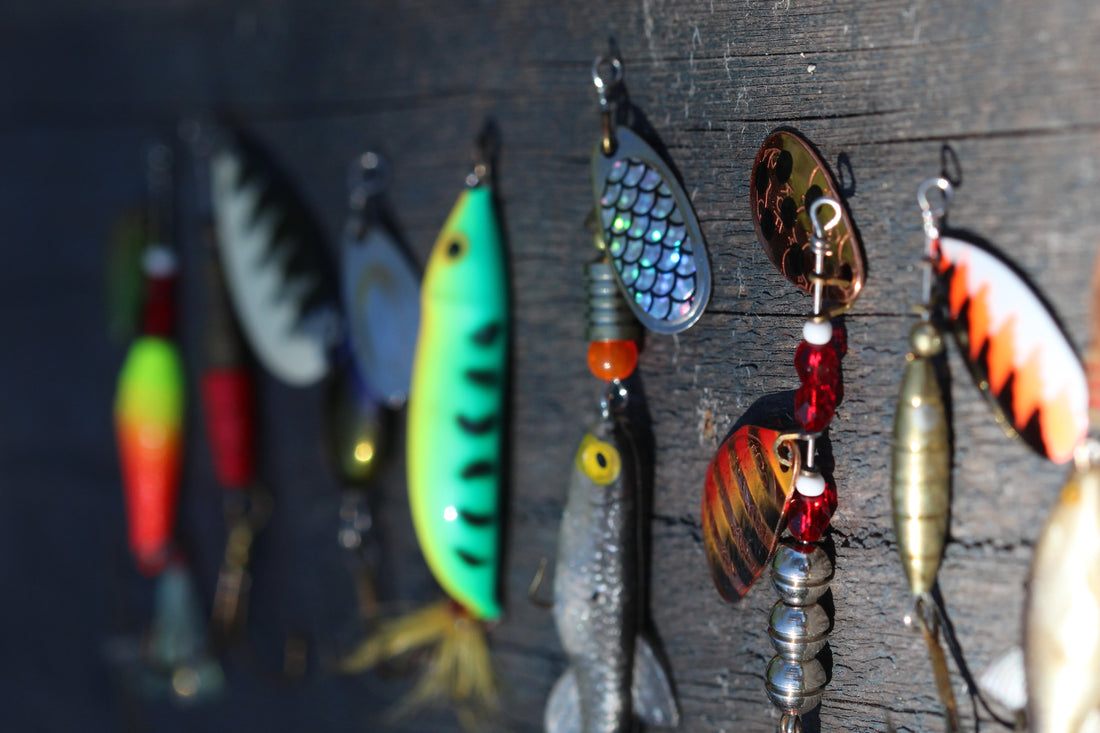
What attracts a fish to a lure?
Share
Fish baiting is the foundation of fishing. Whether it is black pit fishing or wild fishing, the first thing fishermen have to do is to attract fish, and they can only be caught by luring them to the fishing point through the individual characteristics of the bait. So, what attracts a fish to a lure? Below, we will explain this issue in detail.
1. The fishing method of Lure
First, let’s introduce the fishing method of Lure. The main fishing methods are traditional fishing and lures. Lure uses bionic bait to fish. Bionic lures are made using the law of "big fish eat small fish." It can float in the water by using its owner's buoyancy and the traction of the hook line, and it can lure fish by imitating the shape of small fish. The hook on the bionic bait has a lethality, as long as the fish bites the hook, it is difficult to escape, and it has the characteristics of no need to change the bait for long-term use.
2. To attract fish by sensing their organs
So how do you attract the fish? The principle of attracting fish is mainly through the state of bait, color, sound, smell, and other factors to stimulate the fish's vision, hearing, smell, arouse the interest of fish, and then attract fish to come. If you want to lure a fish, you must use bait to actively stimulate the fish's sensory organs to be effective.
Lure fish through the state and color of the bait
Some fish are very interested in the state and color of the bait. For example, silver carp and bighead carp are like bait that is atomized and slowly falling in the water, while carp and crucian carp are interested in the bright red and yellow bait, and mandarin fish are like the bait that sparkles in the water. The surface of the bait is carpeted with a luminescent material that can glow in the dark. The beads of the soft bait are also glowing.
Lure fish by the sound of bait vibrating in the water
The unique Vib blade bait flies to the bottom and quickly enters the strike zone, then creates a strong vibration as it rips the bottom, triggering a feeding frenzy from the fish. Vib lures can meet different search and fishing functions: fast search mode, low vibration mode, medium vibration mode, and high vibration mode. No matter whether the shallow water area, deep water area, freshwater area, or salt water area can be used unimpeded.
Lure the fish with the scent of the bait
Most fish have a hypersensitive sense of smell. Some fish have a sense of smell a thousand times better than humans. They can detect subtle differences between different foods based on smell. Choose the one with the most pleasant smell from the many lures. Then follow the scent to the fishing spot to find food.
3. Choosing the right bait
Choosing the right bait is crucial. Different lures have different purposes and correspond to different types of fish.
Bionic shrimp bait
The shape of the bionic shrimp bait simulates a small shrimp, arouses the fish's interest and appetite, and improves the success rate of feeding the bait. Mainly catch omnivorous and carnivorous fish, such as bass, carp, trout, walleye, barracudas, salmon, salmon, etc.
Bionic frog bait
Bionic frog bait is the best artificial bait for snakeheads. Because the area where snakehead fish live is mostly an environment with dense aquatic plants. You can't do anything with ordinary lure baits. The two hook points of the bionic frog bait are upward, and the hook is located on the back of the bait, which avoids the problem of hanging grass during operation. When using the bionic frog bait, by provoking the pole tip, the bionic frog bait simulates the jumping action of a frog on the aquatic plants, thereby luring the snakehead to attack.
Soft bait
The soft bait is mainly cylindrical and strip-shaped and can be split into the curly tail and T-tail according to the different shapes of the tail. It is usually used to catch low-speed ambush species such as bass, mandarin fish, and catfish. Because of the material, the soft bait has an incomparable advantage over other lure baits, that is, the realistic swimming style. For example, strip-shaped insect baits look no different from real insects in the underwater posture. When the T-tail is retracted slowly, the swing of the tail is also very natural.
Vib
The body shape of vib bait is similar to small bream, mostly submerged, mainly used for broad water surface to lure large predatory fish, which the main target fish are pike, pomfret, catfish, beak, mandarin fish, and so on.
Minnow
Minnow is a lure bionic bait that looks like a small fish. The "tongue plate" located at the front and bottom of the fish lure is its apparent feature, like a duckbill, it mainly plays the role of controlling the water layer. The longer the tongue, the deeper the bait can dive. Minnow is a very manipulative bait. In addition to taking up the line at a normal speed, you can also make the bait take on different postures by combining the speed of taking up the line, pulling, and stopping the fishing rod, and swinging to improve the fish luring effect.
Popper
Popper is a very distinctive floating water lure, characterized by the exaggerated semi-concave shape of the front. Wave climbing relies on this semi-concave shape to create water splashes and movements to attract the attention of fish. The wave-climbing bait will not sink and will always float on the water's surface. This feature makes the wave climbing bait especially suitable for shallow water areas with complex bottom structures.
If you've always dreamed of becoming a great fisherman and attracting more fish to lure, here is the perfect resource to turn your dreams into reality. Our website provides a variety of lures, and fishing equipment for you to choose from.
